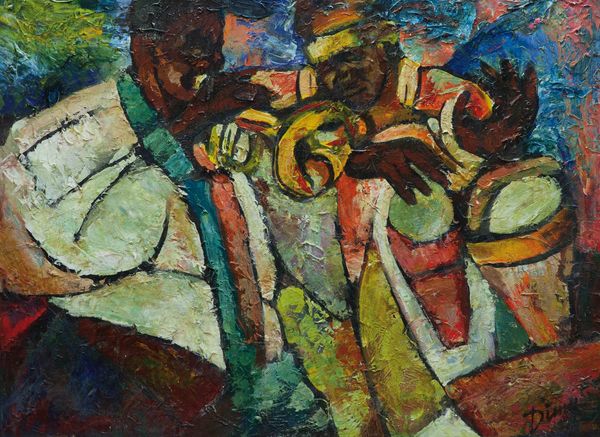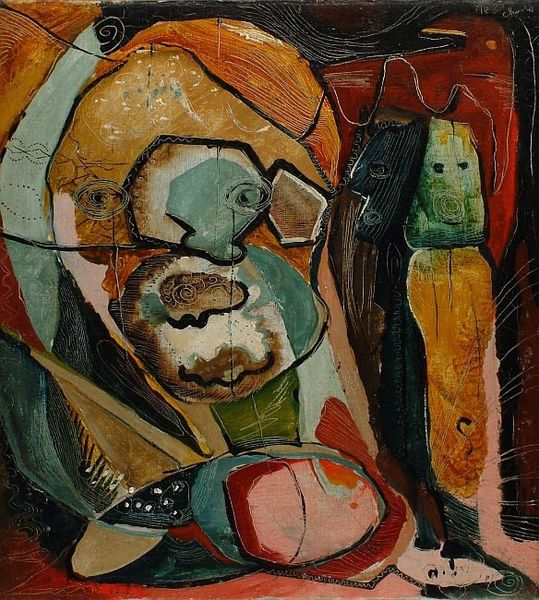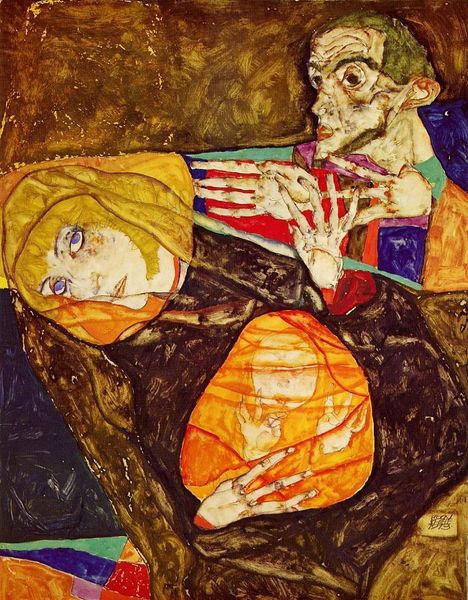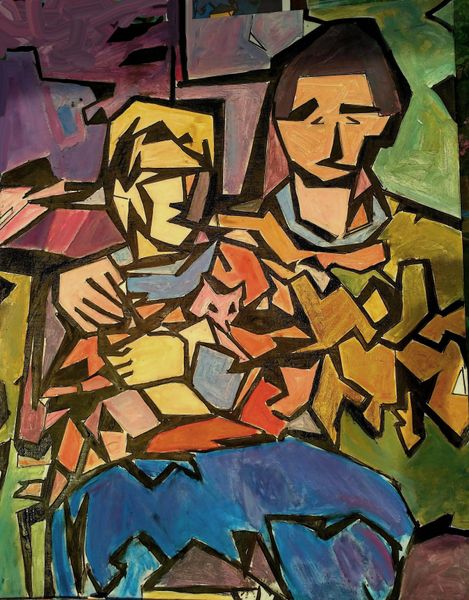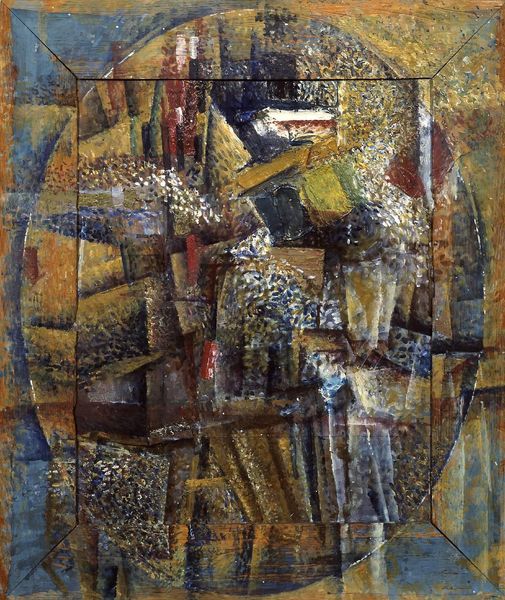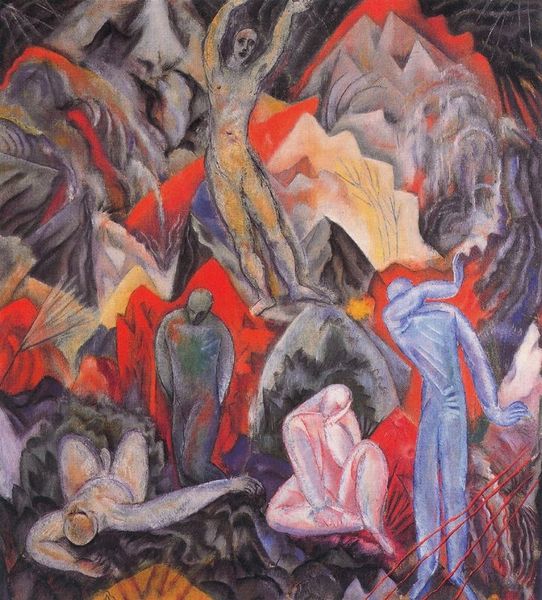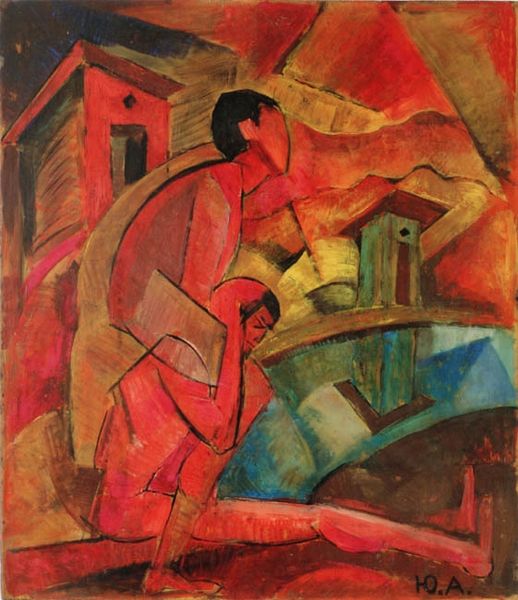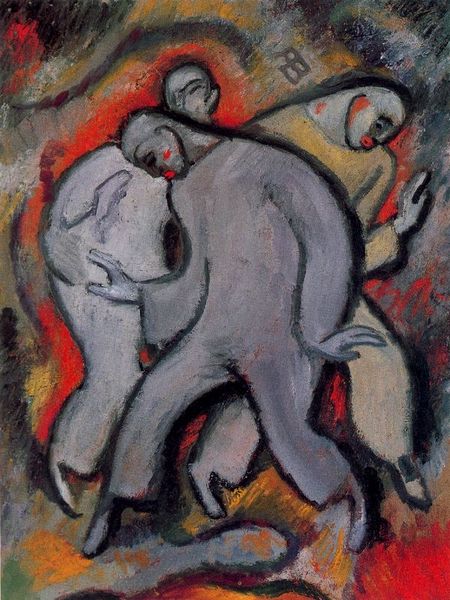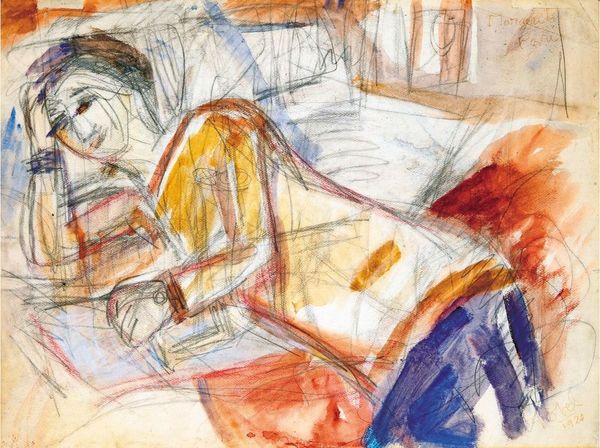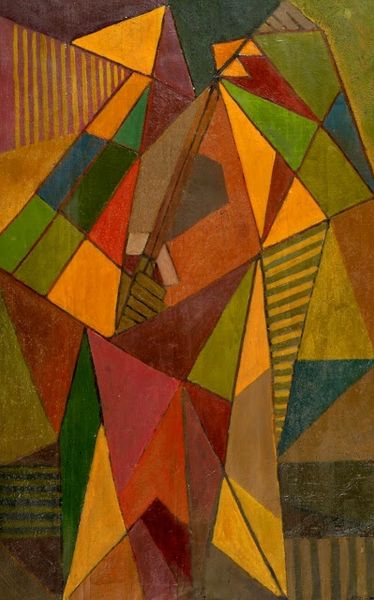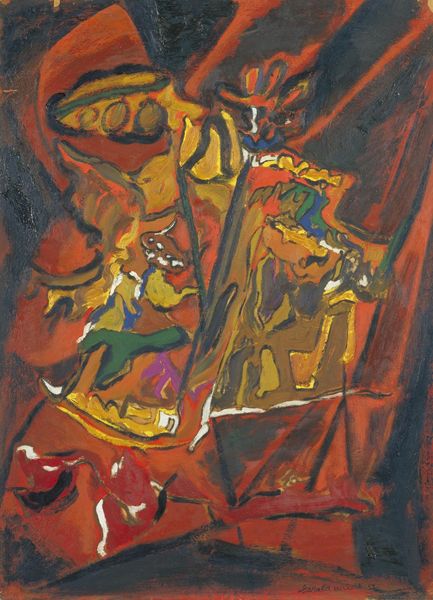
painting, oil-paint
#
portrait
#
painting
#
canvas painting
#
oil-paint
#
figuration
#
oil painting
#
expressionism
#
symbolism
#
genre-painting
#
history-painting
#
portrait art
Dimensions: 70 x 80 cm
Copyright: Public domain
Curator: Egon Schiele's 1912 oil on canvas, titled "Agony," currently residing in the Neue Pinakothek in Munich, is a powerful representation of suffering and despair. Editor: Despair is certainly the immediate mood that strikes you, isn’t it? The compressed space, the fractured forms, it feels claustrophobic and painful, before you even register the figures. Curator: Absolutely. It is critical to recognize that Schiele’s works from this period often engaged with societal anxieties around mortality and existentialism, intensified by the turbulent political climate of pre-World War I Europe. Editor: Precisely. The jagged, angular lines and the earthy palette – ochres, reds, and browns – contribute to that raw, unsettling aesthetic. Notice how Schiele segments and fragments his human forms. Curator: The figures themselves become symbolic representations of pain and vulnerability. They echo the societal instability he perceived at the time and mirror an increase in interest of social and psychological expressionist artists. Editor: The two figures are entwined yet utterly isolated. Their gaunt faces, skeletal hands—he doesn't shy away from a visceral representation of agony. There's a strong sense of interiority; they are lost in their suffering. It's like gazing into a tormented soul. Curator: Schiele’s radical experimentation with form and his unflinching exploration of the human psyche challenged the conventions of Viennese society and Expressionism, setting him apart from some of his peers. His subjects are almost invariably on the fringes. Editor: And technically, Schiele masterfully uses a limited color palette to intensify the emotion. There are no vibrant hues here; it’s all muted, earthen tones that enhance the somber mood. The visible brushstrokes add a sense of immediacy and urgency. Curator: Yes, and Schiele wasn't merely painting personal agony; he was indicting a society teetering on the brink. He created an external expression of inner conflict and used art as his vehicle for social critique. Editor: It's fascinating to dissect the painting and connect it to that specific cultural context. Curator: Indeed. Understanding its historical context certainly allows for a richer, more comprehensive reading of Schiele's challenging and deeply impactful work. Editor: Agreed. Looking at it now, my initial emotional reaction has gained greater historical and intellectual weight.
Comments
No comments
Be the first to comment and join the conversation on the ultimate creative platform.
